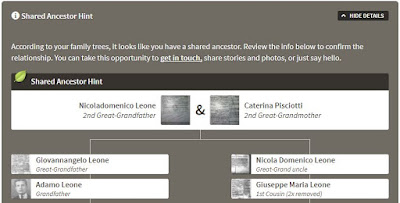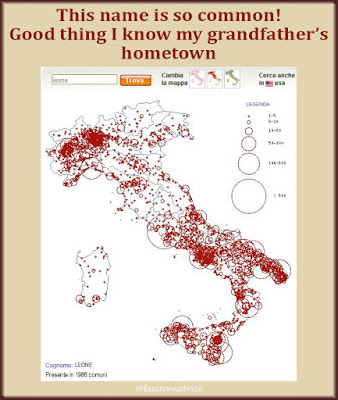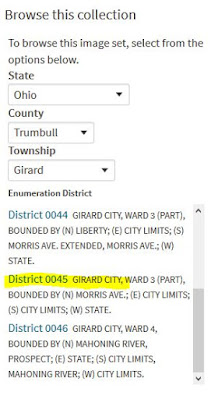Update: Family Tree Analyzer is now available for Mac.
They probably belong in your family tree, right? Those families with your name, from your town. You have every reason to believe they're related to you.
But you haven't found that connecting ancestor yet.
You've got these disconnected families floating in your family tree file. They sit there, waiting for you to find the connection.
How easily can you find those families you added long ago, so you can work on finding out more about them?
Here's a solution I hope you'll try.
 |
| Use an image to identify unattached people in your family tree at a glance. |
I've written three times in the past about a software program called Family Tree Analyzer. I was astonished when I discovered this free program. It does exactly what I'd been struggling to write a program to do. But it does it better than I could ever have done. And it does much more than my program ever would have done.
Get the latest version of the program at http://ftanalyzer.com. You may need to uninstall the previous version before you can install this one.
Here's the feature I want you to look at. First, export a current GEDCOM file from your family tree software. Then launch Family Tree Analyzer and use it to open the GEDCOM.
Click the second tab, labelled Individuals, to see a line for every person in your tree. Go all the way over to the Relation column and click it to sort your people by their relation to you.
You'll see:
- Blood relations
- Relations by marriage
- Direct ancestors
- People married to your direct blood relations
- The root person (presumably you), and finally,
- Unknown
Unknown: these are the people in your tree who are not attached to you—whether by accident or on purpose.
If you can print to a file, go ahead and print this relation-sorted view. You can refer to it again and again, taking advantage of the search function of the digital file you created. Don't print to paper! It's going to be a lot of pages. Mine is 1,358 pages.
Click back to the first tab in Family Tree Analyzer for a second—the one labelled Gedcom Stats. Beneath the "Loading file" messages you'll see how many of each type of relationship you have. My file says:
Direct Ancestors : 189
Blood Relations : 1456
Married to Blood or Direct Relation : 543
Related by Marriage : 12480
Unknown relation : 4959
Blood Relations : 1456
Married to Blood or Direct Relation : 543
Related by Marriage : 12480
Unknown relation : 4959
That last number, 4,959 unknown relations, comes as a big shock to me. That's a lot! How many families have I collected on speculation? Further inspection shows me that very distant, convoluted relations are labelled Unknown. That includes the father-in-law of a cousin of my sister-in-law.
Now you've got the list of unrelated people. This next tip came from someone else, but I can't remember who. I wrote it in a notebook which makes me think I saw it on a YouTube genealogy video. And I subscribe only to Ancestry.com's Crista Cowan, so this tip may belong to her.
Here it is: Create a graphic image (or borrow mine from this article) that says something like "No Relation". Attach this image to each person on your list of unknown relations who is truly unconnected to you. Make it their profile picture.
Now the unrelated people will be easy to spot. Better yet, in Family Tree Maker I can select that image from my tree's media collection and see a list of who it is attached to.
The goal now is to focus on these unrelated families. Do the legwork. Find out all you can about them, keeping an eye open for that missing link to you.
After some research, you may decide to remove some unrelated people from your family tree. Or they may become relatives.
And one day, you may find that your "No Relation" people are no more!


















